
| Publisher: | Simon & Schuster | |
| Genre: | Women, General, Literary, Coming of Age, Fiction | |
| ISBN: | 9781982104580 | |
| Pub Date: | February 2020 | |
| Price: | $26 |
| Fiction |
by Dan Bevacqua
Dan Bevacqua's Molly Bit is the stunning portrait of a young artist who has "it," and the price she pays to triumph and the personal sacrifices of her success. Everyone at her college wants to be famous, including Molly Bit. At 19, she sees signs from the universe that she's one of the chosen and makes a promise to herself to "chop off the old, dead parts and come out new, to burn them off, if need be, like she was a house fire."
Told through third-person narrative installments that leapfrog through her timeline (college in 1993; dues, 1997; success, 2001; etc.), Molly is well-drawn but also inaccessible--readers know her, yet she could be almost any aspiring celebrity on the rise. Molly's stardom breeds the need for bodyguards. Bevacqua is her literary bodyguard, using the arm's length he's constructed to masterful effect as Molly's life widens and contracts simultaneously. As tragedy befalls her ("You can't escape the confines of a traditional narrative story arc in a life like Molly Bit's"), the point of view shifts to one of Molly's oldest friends and the mystery of her demise.
Bevacqua's debut novel is compelling on multiple fronts. A pseudo-character study, it is a deeper examination of moviemaking, fame, violence and power, balanced by Bevacqua's wit. With descriptors that often reflect the celebrity absurd ("Finals exhaustion had lifted like a face peel." "A golden retriever bounded through the snow as if auditioning for a catalogue."), Molly Bit captivates as it lays bare the often-high costs of entertaining. --Lauren O'Brien of Malcolm Avenue Review

| Publisher: | Pegasus Crime | |
| Genre: | Espionage, Mystery & Detective, Crime, General, Thrillers, Fiction | |
| ISBN: | 9781643133355 | |
| Pub Date: | February 2020 | |
| Price: | $25.95 |
| Starred | Mystery & Thriller |
by Paul Vidich
Paul Vidich's The Coldest Warrior begins with a murder. It's 1953, and Dr. Charles Wilson, who had been hired by the government to complete top-secret work, has been killed, pushed out a ninth-floor window. Though the incident has been ruled a suicide, CIA agent Jack Gabriel is ordered by his director to investigate. Gabriel was on the brink of retirement, but he's determined to solve the case--Wilson was an old friend of his. But as Gabriel falls deeper into the suspicious circumstances of the case, it becomes obvious that he can't trust the CIA, the FBI or the White House to be on his side, and it's up to him alone to uncover the truth and keep his family safe.
The Coldest Warrior is a terrifically paced page-turner with convincing red herrings and a surprise ending. These feats are not to be understated. But Vidich also succeeds in crafting incisive portraits of characters, who face their own internal and domestic conflicts. Gabriel struggles to understand his daughter and keep a hold on his marriage, while the CIA and FBI agents who orbit around him grapple with the emotional and physical damage their own webs of deception have wrought. Without ever slowing the pace or detracting from the novel's central mystery or action, Vidich (An Honorable Man) still manages to carve out time in his taut narrative to provide snapshots of men trapped in personal cold wars of their own making. This focus on character gives the novel a cinematic quality, updating the spy genre while still tipping its hat to the beloved tropes that fans know and crave. --Alice Martin, freelance writer and editor
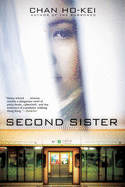
| Publisher: | Black Cat/Grove | |
| Genre: | Crime, General, Thrillers, Fiction, Technological | |
| ISBN: | 9780802129475 | |
| Pub Date: | February 2020 | |
| Price: | $17 |
| Mystery & Thriller |
by Chan Ho-Kei, trans. by Jeremy Tiang
Yes, it's almost two inches thick and more than 400 pages, but Chan Ho-Kei's second thriller available in the U.S., Second Sister, is virtually irresistible, with twisty-turny manipulations guaranteed to keep readers wide awake into the wee hours.
Nga-Yee and Siu-Man are sisters who have only each other left in the world: their father died in a construction work-related accident when Nga-Yee was almost 13 and Siu-Man was four; their mother succumbed to cancer a decade later, leaving Nga-Yee to raise Siu-Man on her own. Returning from her librarian job one evening, Nga-Yee is horrified to learn that the bloody corpse on the pavement outside her apartment building is Siu-Man, who apparently jumped from their 22nd-floor window. The quiet Siu-Man had been ferociously cyberbullied after outing a subway groper, but Nga-Yee thought she was doing everything possible to care for her sensitive sister. Devastated and bewildered, Nga-Yee can't accept that Siu-Man chose death.
When the police prove unhelpful, Nga-Yee approaches an acerbic, arrogant detective who calls himself just N. He initially refuses to take the case, but her tenacity eventually breaks through his protestations.
Chan presents what initially seems to be a linear mystery and amplifies the thriller into a multi-layered treatise on overcrowded cities and its overlooked citizens (his native Hong Kong earns character status here), the unchecked power of the Internet, the grey ethics of revenge, and the potential limits of morality in business, friendships and even among family members. For readers, the provocative mix of urgent contemporary issues and page-turning action won't disappoint. --Terry Hong, Smithsonian BookDragon

| Publisher: | Bitter Lemon Press | |
| Genre: | Psychological, Mystery & Detective, Crime, International Crime & Mystery, Thrillers, Fiction | |
| ISBN: | 9781912242245 | |
| Pub Date: | February 2020 | |
| Price: | $14.95 |
| Mystery & Thriller |
by Riku Onda, trans. by Alison Watts
What should have been a serendipitous event--a lavish birthday celebration for three generations in 1973--turns horrific, leaving 17 family and friends dead. Decades after the tragedy, The Aosawa Murders might be a closed case, but Japanese novelist Riku Onda has plenty more scintillating details to reveal. Onda's English debut is seamlessly translated by Alison Watts.
The Aosawas are a prominent family--professionally respected for running the town's medical clinic and personally admired because of their longstanding wealth and privilege. On that fateful birthday, a commemorative gift delivery of sake and spirits ushers in violent deaths, leaving a single Aosawa survivor. The only daughter, Hisako, was in the midst of it all, but being blind prevented her from definitively identifying any suspects. The perpetrator--although seemingly unknown and unconnected to the Aosawas--allegedly confesses before hanging himself, but his suicide never quite absolves lovely, untouchable Hisako of being somehow involved.
Eleven years later, Makiko Saiga, who was a neighborhood child when the murders occurred, publishes The Forgotten Festival. The fictionalized adaptation becomes a runaway bestseller. Two additional decades pass and, suddenly, an unnamed interviewer has started asking questions. Even after all this time, those directly--but also remotely--involved have memories to resurrect, theories to ponder, maybe even a few secrets to divulge finally.
With sophisticated precision, Onda meticulously imparts both whodunnit and whydunnit clues throughout, adroitly manipulating readers in a cat-and-mouse game of discovering what really happened. Originally published in 2005 as Eugenia, Aosawa is Onda's debut crime novel, for which she earned the Mystery Writers of Japan Award for Fiction in 2006. --Terry Hong, Smithsonian BookDragon

| Publisher: | Doubleday | |
| Genre: | Police Procedural, Mystery & Detective, Suspense, Thrillers, Fiction, Women Sleuths | |
| ISBN: | 9780385545518 | |
| Pub Date: | January 2020 | |
| Price: | $26.95 |
| Mystery & Thriller |
by Louisa Luna
Private investigator Alice Vega returns (after Two Girls Down) in Louisa Luna's gritty The Janes, in which she's hired to find the killer of two underage girls whose bodies were dumped. The trail leads Vega and her partner, Max "Cap" Caplan, to San Diego, Calif., where they discover the girls had been sex trafficked from Mexico, and more minors are likely being held as sex slaves where the dead girls came from.
As Vega gets closer to unearthing the killer and sex trafficking ring, however, her investigation is hampered by the people who hired her. Determined to rescue the other girls before more end up dead, Vega and Cap go rogue to mete out their own brand of justice.
Vega is like a female Joe Pike, someone of few words and lethal action who likes to keep the shades on. She's mostly inscrutable, even though the narrative is from her point of view, but her sense of right and wrong is crystal clear. What she does with a pair of bolt cutters is terrifying, and bad guys should never question whether she means what she says. Cap is a nice guy whose perspective tells half of the story, but the moments in which he gazes at her body without her knowledge are somewhat cringe-inducing. At least he keeps his thoughts to himself and doesn't say or do anything inappropriate; he respects Vega's space and skills. Together they wrap up the case in a violent climactic showdown, and find that mercy and righteousness don't always result in a happy ending. --Elyse Dinh-McCrillis, blogger at Pop Culture Nerd
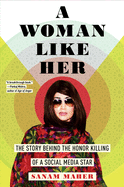
| Publisher: | Melville House | |
| Genre: | Biography & Autobiography, Women, Feminism & Feminist Theory, True Crime, General, Murder, Social Science | |
| ISBN: | 9781612198408 | |
| Pub Date: | January 2020 | |
| Price: | $27.99 |
| Starred | Biography & Memoir |
by Sanam Maher
A Woman Like Her by Sanam Maher is a remarkable feat of investigative journalism that illuminates the controversial life and shocking death of a young Pakistani woman known as Qandeel Baloch.
Baloch loved to sing and dance. A natural performer, she sought social media stardom as a way to escape the restrictions imposed on women in her Southern Punjab community. Through her Facebook posts, she flaunted her idealized self: a sultry, free-spirited beauty willing to shock audiences with sexually explicit videos, all in the hope of garnering the sort of attention that might lead to fame and fortune. Condemned by religious leaders for offending the Islamic sensibilities of Pakistan, Baloch was considered enough of a threat to her family and country's honor that her murder in 2016 was treated as a cause for celebration.
Maher is interested in the collision of Pakistan's ultra-conservative traditions with the unfettered access to modernity that the Internet promises a generation restless for change. For women like Baloch, social media opened up a world of possibilities but also of danger. The online space is dominated by men and harassment of women is rampant, according to the Digital Rights Foundation, a nonprofit dedicated to teaching women across Pakistan how to protect themselves online.
Pakistani journalist Maher's courageous reporting for her first book deserves recognition. She entered into male dominated and often hostile spaces--despite pushback--to pursue the truth behind Baloch's meteoric rise and tragic fall. The result is a fascinating, richly detailed tribute to the fearlessness with which Baloch pursued her dreams. --Shahina Piyarali, writer and reviewer
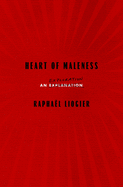
| Publisher: | Other Press | |
| Genre: | Social, Gender Studies, Sexual Abuse & Harassment, Social Science, Philosophy | |
| ISBN: | 9781635429930 | |
| Pub Date: | January 2020 | |
| Price: | $14.99 |
| Social Science |
by Raphaël Liogier, trans. by Antony Shugaar
Are there two words in an author's biography more intimidating to a reader than "French philosopher"? While philosopher Raphaël Liogier, a professor at Sciences Po Aix-en-Provence, does make reference to the likes of Aristotle and Plato in Heart of Maleness, his first title to be translated into English, the book is something pleasantly unexpected: eminently readable.
Liogier was inspired to write his long-form essay by his awareness of men's (including his own) difficulty "accepting the collapse of their empire of virility," which is "unmistakably heralded by the worldwide impetus and power of #MeToo." Liogier is all for ending that empire. In Heart of Maleness, he unpacks the historical justifications for male supremacy and argues for the urgency of renouncing it. Not all of Liogier's observations, as about the double standard surrounding male and female virginity, are wholly original, and some of his thoughts on sex work may rankle. Liogier is at his best when focusing on the current era. Perhaps most valuable is his book's "Five Ways to Undermine the Meaning of #MeToo"--not a how-to but a how-it's-unfortunately-done.
Heart of Maleness is a fine companion to Jared Yates Sexton's The Man They Wanted Me to Be: Toxic Masculinity and a Crisis of Our Own Making. Like Sexton, Liogier is hopeful but doesn't underestimate the work to be done. "In order to be rid of male domination," he writes, "it is not enough to stop the most blatant acts of violence. It is necessary to go deeper, to attack the system itself." --Nell Beram, author and freelance writer

| Publisher: | Houghton Mifflin Harcourt | |
| Genre: | Nature, Life Sciences, Animals, Science, Birds, Zoology - Ornithology, Birdwatching Guides | |
| ISBN: | 9781328604415 | |
| Pub Date: | February 2020 | |
| Price: | $27 |
| Nature & Environment |
by Bernd Heinrich
Bernd Heinrich (Mind of the Raven, Life Everlasting) is a celebrated naturalist and birdwatcher. In White Feathers: The Nesting Lives of Tree Swallows, he turns his attention to a little-understood feature of a much-studied species. Tree swallows are considered a "model" bird for research, but Heinrich finds nothing in the literature to explain the phenomenon that intrigues him: Why does the pair nesting outside his door line its nest with white feathers--the hardest kind to find in the remote Maine woods?
Over eight summers, Heinrich observes the tree swallows that come to nest outside his cabin, where he installs nest boxes for their use. He is up by dawn each morning in season, and often earlier, at three and four a.m., to track them in the dark by sound. White Feathers will be of greatest interest to other tree swallow enthusiasts, but Heinrich's occasional, lovely comment on the art of observation will charm anyone concerned with paying close attention. "My patience was tested by the now constant assault of black flies, which started soon after sunrise. But I could not stop. Many dots are needed before you can connect them into a picture of what it is like to be a tree swallow."
In the end, he offers theories as to the titular question of white feathers, but he illuminates many other nuances of tree swallow life as well along the way. The joy of White Feathers is in its careful concentration, its patience and attention to detail and in the obvious joy its author takes in the nesting lives of an unassuming bird. --Julia Kastner, librarian and blogger at pagesofjulia

| Publisher: | Atria | |
| Genre: | Biography & Autobiography, Form, Personal Memoirs, General, Entertainment & Performing Arts, Humor, Essays, Performing Arts | |
| ISBN: | 9781982116484 | |
| Pub Date: | February 2020 | |
| Price: | $26 |
| Humor |
by Ross Mathews
Comedian Ross Mathews (Man Up!) loves celebrities and, as a red-carpet reporter for nearly two decades, he's interviewed a lot of them. He compiles his favorite encounters in Name Drop. As he notes in the subtitle, these are tales he usually tells friends only at happy hour after being plied with cheap two-for-one cocktails and appetizers. So he helpfully begins each chapter with a witty, related recipe (or "Rossipe") for a cocktail and appetizer. His cocktail recipe for "Barbara Walters Old Fashioned with Extra Bitters" prefaces his tale of co-hosting the View and his unpleasant encounter with Walters. Seconds before the live show started, he asked Walters for any advice and she replied, "I'd like to tell you to go out there and be yourself, but I hope you won't."
All of his encounters are fun and entertaining. Describing his brief backstage meet-and-greet with Celine Dion, he writes, "It was like the first time I had sex--an eternity of anticipation and excitement followed by three seconds of awkward bliss and an anticlimactic ending." His interview with Dame Elizabeth Taylor went downhill quickly after he accidentally greeted her as "Dame Edna." Some encounters turn into real friendships, like Lady Gaga and Rosie O'Donnell (who inadvertently talked him into sleeping with a gay Republican). There's also backstage stories about Celebrity Big Brother and RuPaul's Drag Race, his long friendship with Jackie Collins and a (platonic) mile-high bromance with Jason Priestley.
This pun-filled and fun-filled entertainment offers a delightful mix of sweet and sour celebrity experiences, and Mathews is the perfect tour guide. --Kevin Howell, independent reviewer and marketing consultant
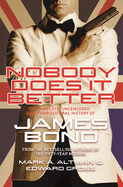
| Publisher: | Forge | |
| Genre: | Biography & Autobiography, History & Criticism, Television, Film, Entertainment & Performing Arts, Performing Arts, Genres - Action & Adventure | |
| ISBN: | 9781250300959 | |
| Pub Date: | February 2020 | |
| Price: | $29.99 |
| Performing Arts |
by Mark A. Altman, Edward Gross
Fans of Ian Fleming's 007 novels and the James Bond movie franchise could not ask for a more exhaustive or sublimely entertaining book on their favorite spy than Nobody Does It Better. This massive oral history runs more than 700 pages and there's not a dull page among them. Mark A. Altman and Edward Gross (The Fifty-Year Mission) have done an outstanding job of collecting and organizing firsthand memories from more than 150 cast and crew members, as well as critics, of the wildly successful film franchise that began with 1962's Dr. No.
Because of the numerous authorities, readers get praising and damning views of the films. Nevertheless, all offer new facts and trivia that will surprise even fans of commentary tracks. All six actors who have played Bond are included. (More if you count the 1967 spoof Casino Royale--which the book does--with Woody Allen sharing memories of that messy production, which had 15 screenwriters and 40 James Bonds.) Sean Connery is especially droll commenting on George Lazenby's Bond interpretation in On Her Majesty's Secret Service: "If he kept his mouth shut, he might have come out a lot better."
Readers will discover the surprising number of leading ladies and villains who were dubbed; actors seriously considered to replace Connery (Dick Van Dyke and Adam West!); and how the series survived six decades by morphing from brutish violence to gadget-reliant espionage to kitschy fantasies and back to darker interpretations.
Marvelously entertaining fun--no matter which Bond you love or loathe. This irresistible oral history is nirvana for Bond fans. --Kevin Howell, independent reviewer and marketing consultant
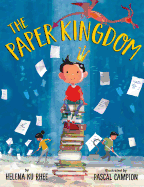
| Publisher: | Random House | |
| Genre: | Emotions & Feelings, Parents, Family, Lifestyles, Social Themes, City & Town Life, Juvenile Fiction | |
| ISBN: | 9780525644613 | |
| Pub Date: | February 2020 | |
| Price: | $17.99 |
| Starred | Children's & Young Adult |
by Helena Ku Rhee, illust. by Pascal Campion
Inspired by her own upbringing, Helena Ku Rhee (The Turtle Ship) crafts a layered, loving picture book tribute to family and the sacrifices that parents make for their children's future. In The Paper Kingdom, Daniel's mother and father work overnight in a big glass building downtown; when the babysitter cancels, Daniel has to go with them. The tired boy witnesses how they are the only ones cleaning the large office filled with paper, and complains about the injustice of it all. In order to divert his attention, the adults concoct a fanciful tale about dragons, kings and queens. " 'The Paper Kingdom,' Papa said. 'Didn't we tell you before? This is the land of the Paper King!' "
This seemingly simple story illuminates the grueling work--often by marginalized, overworked and underpaid people with families--that goes unseen. Rhee adeptly works in the fairy tale realm, while text and illustrations shed light on the parents' arduous labor. Their expressions often belie the cheery conversations they have with Daniel; readers will see the effort they're making to engage their son and complete their work--a complicated and difficult endeavor. Pascal Campion's (Good Morning City) blurry lines and the watercolor-like shadows that follow the characters bring to mind the parallel world of kings and queens. Splashes of red throughout hint at the red dragons of Daniel's imaginings, and Campion peppers his jewel-tone illustrations with floating sheets of paper, adding to the entrancing picture book's whimsy. The affection that exists within the family is obvious, especially in the warm, glowing images that fill the pages. --Shelley Diaz, supervising librarian, BookOps: New York Public Library & Brooklyn Public Library
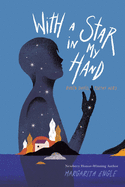
| Publisher: | Atheneum | |
| Genre: | People & Places, Novels in Verse, Caribbean & Latin America, Young Adult Fiction, Biographical | |
| ISBN: | 9781534424937 | |
| Pub Date: | February 2020 | |
| Price: | $17.99 |
| Children's & Young Adult |
by Margarita Engle
Former Young People's Poet Laureate Margarita Engle (Dreams from Many Rivers) writes a compelling first-person historical novel in free verse that presents Rubén Darío (1867-1916), "the Father of modernismo," to young readers.
In With a Star in My Hand, Engle sticks closely to the facts of the poet's life, concentrating on his childhood and adolescence in Nicaragua. She writes of his abandonment by his parents and his upbringing by other relatives, including his great-uncle, a wonderful storyteller. As a teenager, Darío gained fame throughout Central America, becoming "el niño poeta" (the Poet Boy) after a newspaper published one of his poems.
Engle delves into Darío's unusual style, which "blended poetry and prose, complex rhymes, assonance... and free verse, as well as classical European and Indigenous Native American images"--a style that introduced a new way of writing poetry to Latin America and the world. Imagining his voice, she creates images that will likely appeal to today's would-be poets, such as Darío describing himself: "So I let my hair grow long/ like my indio ancestors,/ and I tie it back in a ponytail,/ think of myself as a rebel/ .../ I fight with boys,/ flirt with girls,/ and absolutely refuse/ to listen to grown-ups." Leading up to the poet's first book, Azul, published when he was 21, this accessible volume serves as an excellent introduction to Darío and will likely encourage readers to search out his poetry to appreciate his genius. --Melinda Greenblatt, freelance book reviewer
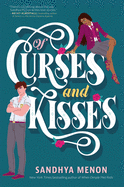
| Publisher: | Simon Pulse | |
| Genre: | General, Romance, Young Adult Fiction, Fairy Tales & Folklore, Diversity & Multicultural | |
| ISBN: | 9781534417540 | |
| Pub Date: | February 2020 | |
| Price: | $18.99 |
| Children's & Young Adult |
by Sandhya Menon
In this dreamy, sassy confection of a romance, Sandhya Menon (From Twinkle, with Love) sweeps readers into a modern-day fairy tale set among blue bloods in an exclusive boarding school.
Indian Princess Jaya Rao of the Imperial House of Mysuru enrolls for her senior year at St. Rosetta's International Academy in Colorado with a plan: win classmate and English noble Grey Emerson's heart, then shatter it. Not only do their families have a longstanding feud over a stolen ruby, Jaya is furious that Grey allegedly leaked scandalous information to a tabloid about her little sister, Isha. Grey, in turn, is spending his senior year believing that the stolen ruby's curse will kill him on his 18th birthday. He has shut himself off from friendships and love and knows better than to trust a Rao. But vibrant, strong-willed Jaya leaves him longing for connection. Jaya doesn't realize her plan could backfire until she's already falling for the enemy.
This gossipy, lighthearted romp takes its cues from a classic. Manon prefaces the story with a quote from Disney's Beauty and the Beast and adds other nods to the fairy tale: Jaya wears a possibly magical rose pendant, and Grey has a habit of wasting away in the lonely tower of the school's West Wing. Frothier than Manon's previous down-to-earth romances, Of Curses and Kisses still explores her touchstone themes of self-discovery and independence. Funny, extravagant and satisfying, this love story should delight romantic hearts and anyone who relishes juicy boarding school antics. --Jaclyn Fulwood, youth services manager at Main Branch, Dayton Metro Library